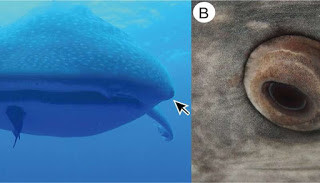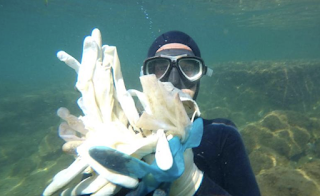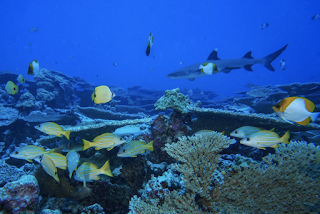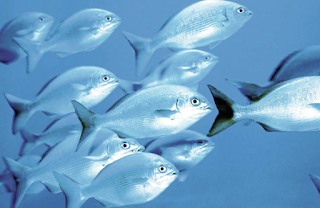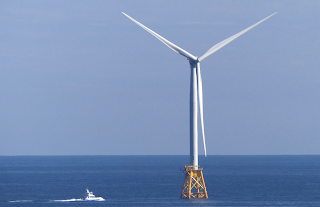Endangered Ganges shark, megamouths, shark drones, whale shark “eye-teeth” and more…
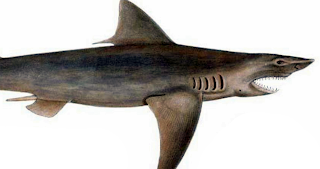 The Ganges shark, Glyphis gangeticus, is listed as a critically endangered species on the IUCN red list. The species is so rare, that after a single sighting in 2006, the species was not seen again until 2016, when it reemerged at a local Mumbai fish market. Typically found in rivers of India, the scientist recently redrew expanded distribution maps when, as the result of various genetic studies, the Borneo river shark and the Irrawaddy river shark (were reclassified as part of the Ganges shark species.
The Ganges shark, Glyphis gangeticus, is listed as a critically endangered species on the IUCN red list. The species is so rare, that after a single sighting in 2006, the species was not seen again until 2016, when it reemerged at a local Mumbai fish market. Typically found in rivers of India, the scientist recently redrew expanded distribution maps when, as the result of various genetic studies, the Borneo river shark and the Irrawaddy river shark (were reclassified as part of the Ganges shark species.
2. Ocean Conservation Administration (OCA) lacks data to protect megamouth sharks
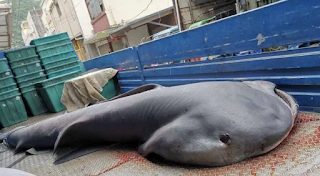 The Ocean Conservation Administration (OCA) yesterday said it needs more data to decide whether to protect megamouth sharks, after an animal protection group said fishing vessels have been catching the species without restrictions. According to fisheries data, eight megamouth sharks have been caught off the coast of Taiwan so far this year, and seven of the sharks were caught by the same boat. Research describes the species as slow-growing, having late sexual maturity, and small litter sizes.
The Ocean Conservation Administration (OCA) yesterday said it needs more data to decide whether to protect megamouth sharks, after an animal protection group said fishing vessels have been catching the species without restrictions. According to fisheries data, eight megamouth sharks have been caught off the coast of Taiwan so far this year, and seven of the sharks were caught by the same boat. Research describes the species as slow-growing, having late sexual maturity, and small litter sizes.
Read more in “Taiwan English News”
Additional information here
3. Australia spends $8 m on shark-spotting drones to patrol coastline
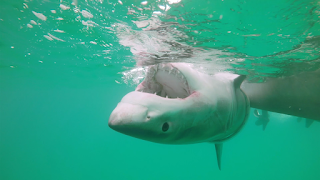 In a bid to protect beachgoers from the animals that live in the water they’re entering, the New South Wales government will spend AU $8 million on a new strategy that includes a fleet of shark-spotting drones to patrol the state’s coastline. Minister for Agriculture Adam Marshall is calling the strategy “shark management” and said it is based on five years of scientific research into shark behavior and the most effective ways to protect beachgoers.
In a bid to protect beachgoers from the animals that live in the water they’re entering, the New South Wales government will spend AU $8 million on a new strategy that includes a fleet of shark-spotting drones to patrol the state’s coastline. Minister for Agriculture Adam Marshall is calling the strategy “shark management” and said it is based on five years of scientific research into shark behavior and the most effective ways to protect beachgoers.
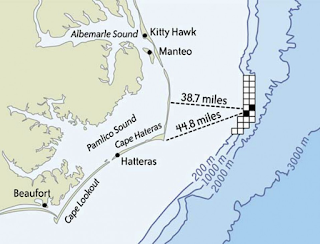 Last week, the federal government overruled North Carolina’s objection to seismic testing off the coast, saying the activity proposed by the company Western Geco is in the national interest. The decision allows the Bureau of Ocean and Energy Management to issue permits for seismic testing on the Atlantic Outer Continental Shelf, roughly from Maryland to Florida. Four more companies have requested permits. Environmental coastal advocates condemned the decision. “The decision to overrule the state shows the unwillingness of the federal government to listen to the wishes of the people,” said Larry Baldwin, Crystal Coast waterkeeper.
Last week, the federal government overruled North Carolina’s objection to seismic testing off the coast, saying the activity proposed by the company Western Geco is in the national interest. The decision allows the Bureau of Ocean and Energy Management to issue permits for seismic testing on the Atlantic Outer Continental Shelf, roughly from Maryland to Florida. Four more companies have requested permits. Environmental coastal advocates condemned the decision. “The decision to overrule the state shows the unwillingness of the federal government to listen to the wishes of the people,” said Larry Baldwin, Crystal Coast waterkeeper.
Whale sharks, as their name implies, are very large—they can grow to be 18 meters long. They are unique in other ways, as well—they tend to eat mostly plankton and they have eyes on the sides of their heads instead of in front, as is the case with most other sharks. They can also retract their eyes if need be to protect them from other creatures in the sea, and unlike most other sharks, they do not have eyelids. Now, researchers have found that their eye coverings are covered in tiny teeth.
8. Free-diving champion Sahika Ercümen dives in Bosporus to collect rubbish
 Turkish world record-holder free-diver Sahika Encumen collects rubbish from the sea as she dives in Ortakoy coastline to observe the life and pollution in the Bosphorus in Istanbul, Turkey on June 27, 2020. Encumen announced as “Life Below Water Advocate” of Turkey by United Nations Development Programme (UNDP), raises awareness on plastic pollution.
Turkish world record-holder free-diver Sahika Encumen collects rubbish from the sea as she dives in Ortakoy coastline to observe the life and pollution in the Bosphorus in Istanbul, Turkey on June 27, 2020. Encumen announced as “Life Below Water Advocate” of Turkey by United Nations Development Programme (UNDP), raises awareness on plastic pollution.
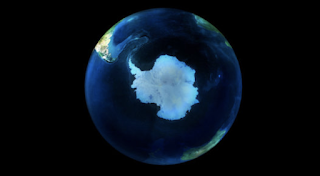 The South Pole cooled until the 1980s and has since warmed substantially. These trends are affected by natural and anthropogenic climate change. Clem and his team analyzed weather station data at the South Pole, as well as climate models to examine the warming in the Antarctic interior. They found that between 1989 and 2018, the South Pole had warmed by about 1.8 degrees Celsius over the past 30 years at a rate of +0.6 degrees Celcius per decade — three times the global average.
The South Pole cooled until the 1980s and has since warmed substantially. These trends are affected by natural and anthropogenic climate change. Clem and his team analyzed weather station data at the South Pole, as well as climate models to examine the warming in the Antarctic interior. They found that between 1989 and 2018, the South Pole had warmed by about 1.8 degrees Celsius over the past 30 years at a rate of +0.6 degrees Celcius per decade — three times the global average.
Read more in “Science Daily”
 The soft coral garden, presented in a new Frontiers in Marine Science paper, is the first habitat of this kind to have been identified and assessed in west Greenland waters. The study has direct implications for the management of economically important deep-sea trawl fisheries, which are immediately adjacent to the habitat. The researchers hope that a 486 km2 area will be recognized as a ‘Vulnerable Marine Ecosystem’ under UN guidelines, to ensure that it is protected.
The soft coral garden, presented in a new Frontiers in Marine Science paper, is the first habitat of this kind to have been identified and assessed in west Greenland waters. The study has direct implications for the management of economically important deep-sea trawl fisheries, which are immediately adjacent to the habitat. The researchers hope that a 486 km2 area will be recognized as a ‘Vulnerable Marine Ecosystem’ under UN guidelines, to ensure that it is protected.
Read more in “University College London”
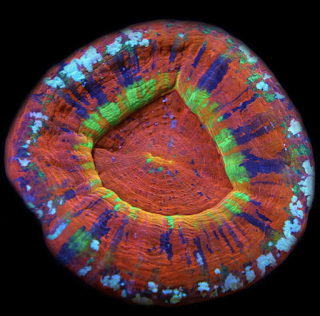 A new study illustrates the potential impact of recurrent heatwaves on coral species collected by the Australian aquarium coral industry. The study’s lead author, Professor Morgan Pratchett from the ARC Centre of Excellence for Coral Reef Studies at James Cook University (Coral CoE at JCU), says there are active and expanding aquarium coral fisheries operating across the country in Western Australia, the Northern Territory and Queensland. “With widespread coral bleaching again affecting the Great Barrier Reef, and also occurring on coral reefs in Western Australia, there is inevitable concern regarding the sustainability and defensibility of ongoing coral harvesting,” Prof Pratchett said.
A new study illustrates the potential impact of recurrent heatwaves on coral species collected by the Australian aquarium coral industry. The study’s lead author, Professor Morgan Pratchett from the ARC Centre of Excellence for Coral Reef Studies at James Cook University (Coral CoE at JCU), says there are active and expanding aquarium coral fisheries operating across the country in Western Australia, the Northern Territory and Queensland. “With widespread coral bleaching again affecting the Great Barrier Reef, and also occurring on coral reefs in Western Australia, there is inevitable concern regarding the sustainability and defensibility of ongoing coral harvesting,” Prof Pratchett said.Read more in “Australian Research Council”
Papahānaumokuākea, a UNESCO World Heritage Sites is the largest contiguous fully protected conservation area under the U.S. flag and the largest marine conservation area in the world — has been awarded more than $1 million in funding for research.
13. Improvement in Hawaii’s marine management can restore coral reef fisheries
Melting of Arctic ice due to climate change has exposed more sea surface to an atmosphere with higher concentrations of carbon dioxide. Scientists have long suspected this trend would raise CO2 in Arctic Ocean water. Now University of Montana researcher Michael DeGrandpre and his patented sensors have helped an international team determine that, indeed, CO2 levels are rising in water across the Arctic Ocean’s Canada Basin.
The artificial lighting which lines the world’s coastlines could be having a significant impact on species that rely on the moon and stars to find food, new research suggests. Creatures such as the sand hopper, Talitrus saltator orientate their nightly migrations based on the moon’s position and brightness of the natural night sky. However, a study by the University of Plymouth and Bangor University shows the presence of artificial light originating from cities several kilometers away (also known as artificial skyglow) disrupts the lunar compass they use when covering long distances.
15. New England looks to Europe to assess impact of offshore energy developments
Rhode Island is still the only state in the country with an offshore wind farm, but that will change in the coming years as wind farms are built along the entire Eastern Seaboard, from Virginia all the way up to Maine. Now five years old, the Block Island wind farm, consisting of just five turbines, has been the subject of considerable study as scientists determine what impacts, if any, the construction of the facility and the turbines themselves are having on the ecosystem. Researchers are also looking to the future, when thousands of wind turbines will be coming online.
———————————————–

